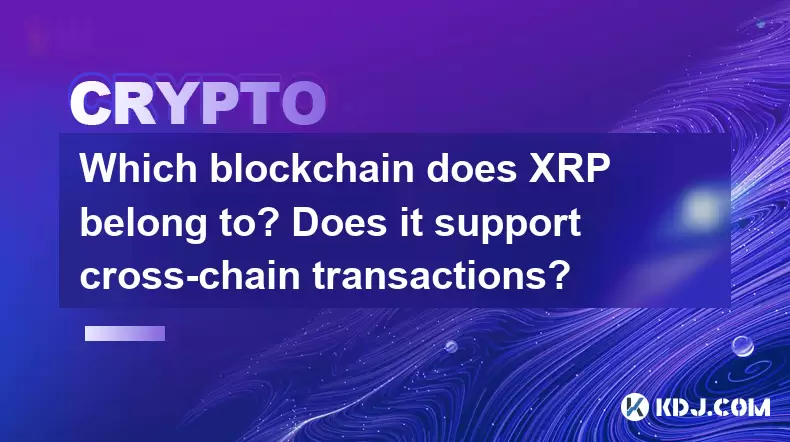-
 Bitcoin
Bitcoin $107,461.2530
0.65% -
 Ethereum
Ethereum $2,425.6945
-0.64% -
 Tether USDt
Tether USDt $1.0003
-0.01% -
 XRP
XRP $2.1844
4.49% -
 BNB
BNB $646.3777
0.36% -
 Solana
Solana $146.6972
3.90% -
 USDC
USDC $1.0000
0.00% -
 TRON
TRON $0.2744
1.17% -
 Dogecoin
Dogecoin $0.1631
1.28% -
 Cardano
Cardano $0.5609
1.22% -
 Hyperliquid
Hyperliquid $37.0726
2.08% -
 Bitcoin Cash
Bitcoin Cash $497.3222
-0.12% -
 Sui
Sui $2.7220
3.19% -
 Chainlink
Chainlink $13.1487
0.79% -
 UNUS SED LEO
UNUS SED LEO $9.0787
0.68% -
 Avalanche
Avalanche $17.6542
1.11% -
 Stellar
Stellar $0.2377
1.49% -
 Toncoin
Toncoin $2.8426
0.81% -
 Shiba Inu
Shiba Inu $0.0...01140
1.72% -
 Litecoin
Litecoin $85.2565
0.62% -
 Hedera
Hedera $0.1475
2.69% -
 Monero
Monero $314.1893
2.28% -
 Bitget Token
Bitget Token $4.6752
0.90% -
 Dai
Dai $1.0001
0.02% -
 Polkadot
Polkadot $3.3425
1.28% -
 Ethena USDe
Ethena USDe $1.0001
0.02% -
 Uniswap
Uniswap $6.9500
1.23% -
 Pi
Pi $0.5304
-3.13% -
 Pepe
Pepe $0.0...09311
0.91% -
 Aave
Aave $254.6674
-1.33%
Which blockchain does XRP belong to? Does it support cross-chain transactions?
XRP, a cryptocurrency on the Ripple blockchain, facilitates fast, low-cost cross-border transactions by acting as a bridge currency in the RippleNet ecosystem.
May 12, 2025 at 04:00 pm

XRP is a cryptocurrency that belongs to the Ripple blockchain. The Ripple blockchain, also known as the RippleNet, is a decentralized payment protocol that facilitates fast and low-cost international money transfers. The primary function of XRP within this ecosystem is to serve as a bridge currency to enable liquidity and efficiency in cross-border transactions.
The Ripple blockchain was designed to solve some of the inefficiencies in traditional banking systems, particularly in the area of cross-border payments. XRP is integral to this system, acting as a neutral intermediary currency that can be used to quickly convert one fiat currency to another. This reduces the need for pre-funded accounts in different currencies, thereby saving time and reducing costs.
The Structure of the Ripple Blockchain
The Ripple blockchain operates on a distributed ledger technology (DLT), but it is distinct from other blockchains like Bitcoin or Ethereum in several ways. Unlike Bitcoin, which uses Proof of Work (PoW), Ripple uses a consensus protocol known as the Ripple Protocol consensus algorithm (RPCA). This consensus mechanism allows for faster transaction validations, making it more suitable for real-time payment processing.
Nodes on the Ripple network, known as validators, work together to agree on the order and outcome of transactions. This consensus process is achieved without mining, which contributes to the efficiency and scalability of the Ripple blockchain. The ledger updates every few seconds, ensuring that transactions are processed quickly and reliably.
XRP and Cross-Chain Transactions
One of the key features of the Ripple blockchain is its ability to facilitate cross-chain transactions. Cross-chain transactions refer to the transfer of assets between different blockchains. RippleNet supports this through various mechanisms, including the use of Interledger Protocol (ILP).
The Interledger Protocol is a protocol suite designed to connect different payment networks and ledgers. It allows for the seamless transfer of value across different blockchains, including those that do not natively support XRP. ILP works by breaking down large transactions into smaller packets that can be routed through different ledgers, ensuring that the entire transaction is completed only when all packets are successfully delivered.
How XRP Supports Cross-Chain Transactions
XRP plays a crucial role in facilitating cross-chain transactions within the Ripple ecosystem. When a user wants to transfer funds from one blockchain to another, XRP can act as an intermediary. For instance, if a user wants to send funds from a Bitcoin wallet to an Ethereum wallet, the transaction can be routed through the Ripple blockchain using XRP as a bridge currency.
Here’s how a typical cross-chain transaction using XRP might work:
- Initiate the Transaction: The user initiates a transaction from their Bitcoin wallet to an Ethereum wallet.
- Conversion to XRP: The Bitcoin is first converted to XRP on the Ripple blockchain.
- Transfer of XRP: The XRP is then transferred across the Ripple blockchain to the destination.
- Conversion to Ethereum: Once the XRP reaches the destination, it is converted to Ethereum and deposited into the user’s Ethereum wallet.
This process is facilitated by the Interledger Protocol, ensuring that the transaction is secure and efficient.
Benefits of Using XRP for Cross-Chain Transactions
Using XRP for cross-chain transactions offers several benefits. Firstly, it reduces the time required for transactions to be processed. Traditional cross-border payments can take days to settle, but with XRP, transactions can be completed in seconds.
Secondly, XRP transactions are typically less expensive than traditional banking methods. The cost of transferring XRP is minimal compared to the fees charged by banks for international wire transfers.
Lastly, the use of XRP as a bridge currency enhances liquidity. By converting different currencies into XRP, the Ripple network can ensure that there is always enough liquidity to facilitate transactions, even between less commonly traded currency pairs.
Practical Examples of Cross-Chain Transactions with XRP
To understand how cross-chain transactions work in practice, consider the following examples:
Remittance Services: A user in the United States wants to send money to a family member in the Philippines. They can use a remittance service that leverages the Ripple blockchain. The user sends USD to the service, which converts it to XRP and then to Philippine Pesos, ensuring that the family member receives the funds quickly and at a lower cost.
Corporate Payments: A multinational corporation needs to pay its suppliers in different countries. By using the Ripple blockchain and XRP, the corporation can convert its funds into XRP and then into the local currencies of its suppliers, streamlining the payment process and reducing costs.
Decentralized Exchanges: Decentralized exchanges (DEXs) can use XRP to facilitate trading between different cryptocurrencies. For instance, a DEX might use XRP to enable trading between Bitcoin and Ethereum, ensuring that trades are executed efficiently and securely.
Technical Details of Cross-Chain Transactions
For those interested in the technical aspects of cross-chain transactions using XRP, here’s a more detailed look at how these transactions are processed:
- Transaction Initiation: A user initiates a transaction from one blockchain to another through a compatible wallet or platform.
- Pathfinding: The Interledger Protocol uses pathfinding algorithms to determine the most efficient route for the transaction across different ledgers.
- Packetization: The transaction amount is broken down into smaller packets, each with its own unique identifier.
- Routing: Each packet is routed through the chosen path, which may involve multiple ledgers.
- Settlement: Once all packets reach their destination, the transaction is settled, and the funds are converted back into the desired currency.
This process ensures that cross-chain transactions are not only possible but also efficient and secure.
Frequently Asked Questions
Q: Can XRP be used for transactions within a single blockchain?
A: Yes, XRP can be used for transactions within the Ripple blockchain. It serves as a native currency for the Ripple network, facilitating fast and low-cost payments.
Q: Are there any limitations to using XRP for cross-chain transactions?
A: While XRP is highly efficient for cross-chain transactions, there can be limitations related to the adoption of the Ripple blockchain and the Interledger Protocol by other networks. Additionally, regulatory considerations can impact the use of XRP in certain jurisdictions.
Q: How does the security of XRP compare to other cryptocurrencies for cross-chain transactions?
A: XRP's security is maintained through its consensus protocol, which is different from the mining-based security of Bitcoin. While this makes XRP transactions faster and more energy-efficient, the security model is based on trust in the validator nodes. It's essential to consider these differences when evaluating the security of cross-chain transactions.
Q: Can individual users directly initiate cross-chain transactions using XRP, or do they need to go through a service provider?
A: Individual users can initiate cross-chain transactions using XRP through compatible wallets and platforms that support the Interledger Protocol. However, for more complex transactions or those involving large sums, users might prefer to go through service providers that can offer additional security and efficiency.
Disclaimer:info@kdj.com
The information provided is not trading advice. kdj.com does not assume any responsibility for any investments made based on the information provided in this article. Cryptocurrencies are highly volatile and it is highly recommended that you invest with caution after thorough research!
If you believe that the content used on this website infringes your copyright, please contact us immediately (info@kdj.com) and we will delete it promptly.
- Across Crypto Project Faces Heat: Secret $23M Transfer Sparks Governance Debate
- 2025-06-28 16:30:13
- Trump Coin's Wild Ride: Liquidity Drain, Exchange Deposits, and What It Means for Binance & OKX
- 2025-06-28 16:50:13
- Trump, Memecoin Mania, and Whale Watching: A New York Minute in Crypto
- 2025-06-28 16:30:13
- Shiba Inu, Lending Coins, and Early Holders: A New Frontier
- 2025-06-28 16:51:59
- Meme Coins in July 2025: Investing in the Future of Hype?
- 2025-06-28 16:51:59
- SUI's Trending Surge: Decoding the Reasons Behind the Hype
- 2025-06-28 16:55:12
Related knowledge

How to customize USDT TRC20 mining fees? Flexible adjustment tutorial
Jun 13,2025 at 01:42am
Understanding USDT TRC20 Mining FeesMining fees on the TRON (TRC20) network are essential for processing transactions. Unlike Bitcoin or Ethereum, where miners directly validate transactions, TRON uses a delegated proof-of-stake (DPoS) mechanism. However, users still need to pay bandwidth and energy fees, which are collectively referred to as 'mining fe...

USDT TRC20 transaction is stuck? Solution summary
Jun 14,2025 at 11:15pm
Understanding USDT TRC20 TransactionsWhen users mention that a USDT TRC20 transaction is stuck, they typically refer to a situation where the transfer of Tether (USDT) on the TRON blockchain has not been confirmed for an extended period. This issue may arise due to various reasons such as network congestion, insufficient transaction fees, or wallet-rela...

How to cancel USDT TRC20 unconfirmed transactions? Operation guide
Jun 13,2025 at 11:01pm
Understanding USDT TRC20 Unconfirmed TransactionsWhen dealing with USDT TRC20 transactions, it’s crucial to understand what an unconfirmed transaction means. An unconfirmed transaction is one that has been broadcasted to the blockchain network but hasn’t yet been included in a block. This typically occurs due to low transaction fees or network congestio...

How to check USDT TRC20 balance? Introduction to multiple query methods
Jun 21,2025 at 02:42am
Understanding USDT TRC20 and Its ImportanceUSDT (Tether) is one of the most widely used stablecoins in the cryptocurrency market. It exists on multiple blockchain networks, including TRC20, which operates on the Tron (TRX) network. Checking your USDT TRC20 balance accurately is crucial for users who hold or transact with this asset. Whether you're sendi...

What to do if USDT TRC20 transfers are congested? Speed up trading skills
Jun 13,2025 at 09:56am
Understanding USDT TRC20 Transfer CongestionWhen transferring USDT TRC20, users may occasionally experience delays or congestion. This typically occurs due to network overload on the TRON blockchain, which hosts the TRC20 version of Tether. Unlike the ERC20 variant (which runs on Ethereum), TRC20 transactions are generally faster and cheaper, but during...

The relationship between USDT TRC20 and TRON chain: technical background analysis
Jun 12,2025 at 01:28pm
What is USDT TRC20?USDT TRC20 refers to the Tether (USDT) token issued on the TRON blockchain using the TRC-20 standard. Unlike the more commonly known ERC-20 version of USDT (which runs on Ethereum), the TRC-20 variant leverages the TRON network's infrastructure for faster and cheaper transactions. The emergence of this version came as part of Tether’s...

How to customize USDT TRC20 mining fees? Flexible adjustment tutorial
Jun 13,2025 at 01:42am
Understanding USDT TRC20 Mining FeesMining fees on the TRON (TRC20) network are essential for processing transactions. Unlike Bitcoin or Ethereum, where miners directly validate transactions, TRON uses a delegated proof-of-stake (DPoS) mechanism. However, users still need to pay bandwidth and energy fees, which are collectively referred to as 'mining fe...

USDT TRC20 transaction is stuck? Solution summary
Jun 14,2025 at 11:15pm
Understanding USDT TRC20 TransactionsWhen users mention that a USDT TRC20 transaction is stuck, they typically refer to a situation where the transfer of Tether (USDT) on the TRON blockchain has not been confirmed for an extended period. This issue may arise due to various reasons such as network congestion, insufficient transaction fees, or wallet-rela...

How to cancel USDT TRC20 unconfirmed transactions? Operation guide
Jun 13,2025 at 11:01pm
Understanding USDT TRC20 Unconfirmed TransactionsWhen dealing with USDT TRC20 transactions, it’s crucial to understand what an unconfirmed transaction means. An unconfirmed transaction is one that has been broadcasted to the blockchain network but hasn’t yet been included in a block. This typically occurs due to low transaction fees or network congestio...

How to check USDT TRC20 balance? Introduction to multiple query methods
Jun 21,2025 at 02:42am
Understanding USDT TRC20 and Its ImportanceUSDT (Tether) is one of the most widely used stablecoins in the cryptocurrency market. It exists on multiple blockchain networks, including TRC20, which operates on the Tron (TRX) network. Checking your USDT TRC20 balance accurately is crucial for users who hold or transact with this asset. Whether you're sendi...

What to do if USDT TRC20 transfers are congested? Speed up trading skills
Jun 13,2025 at 09:56am
Understanding USDT TRC20 Transfer CongestionWhen transferring USDT TRC20, users may occasionally experience delays or congestion. This typically occurs due to network overload on the TRON blockchain, which hosts the TRC20 version of Tether. Unlike the ERC20 variant (which runs on Ethereum), TRC20 transactions are generally faster and cheaper, but during...

The relationship between USDT TRC20 and TRON chain: technical background analysis
Jun 12,2025 at 01:28pm
What is USDT TRC20?USDT TRC20 refers to the Tether (USDT) token issued on the TRON blockchain using the TRC-20 standard. Unlike the more commonly known ERC-20 version of USDT (which runs on Ethereum), the TRC-20 variant leverages the TRON network's infrastructure for faster and cheaper transactions. The emergence of this version came as part of Tether’s...
See all articles
























































































